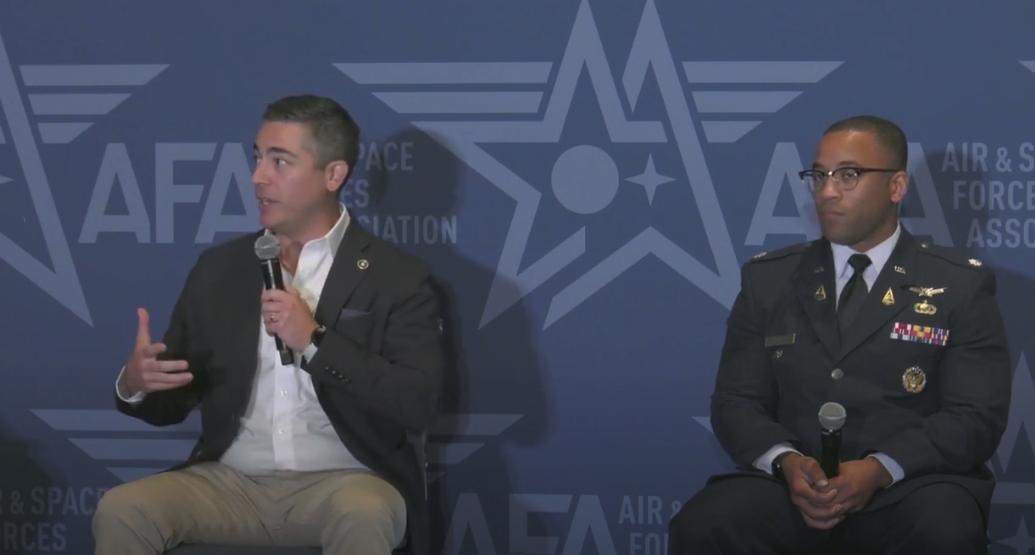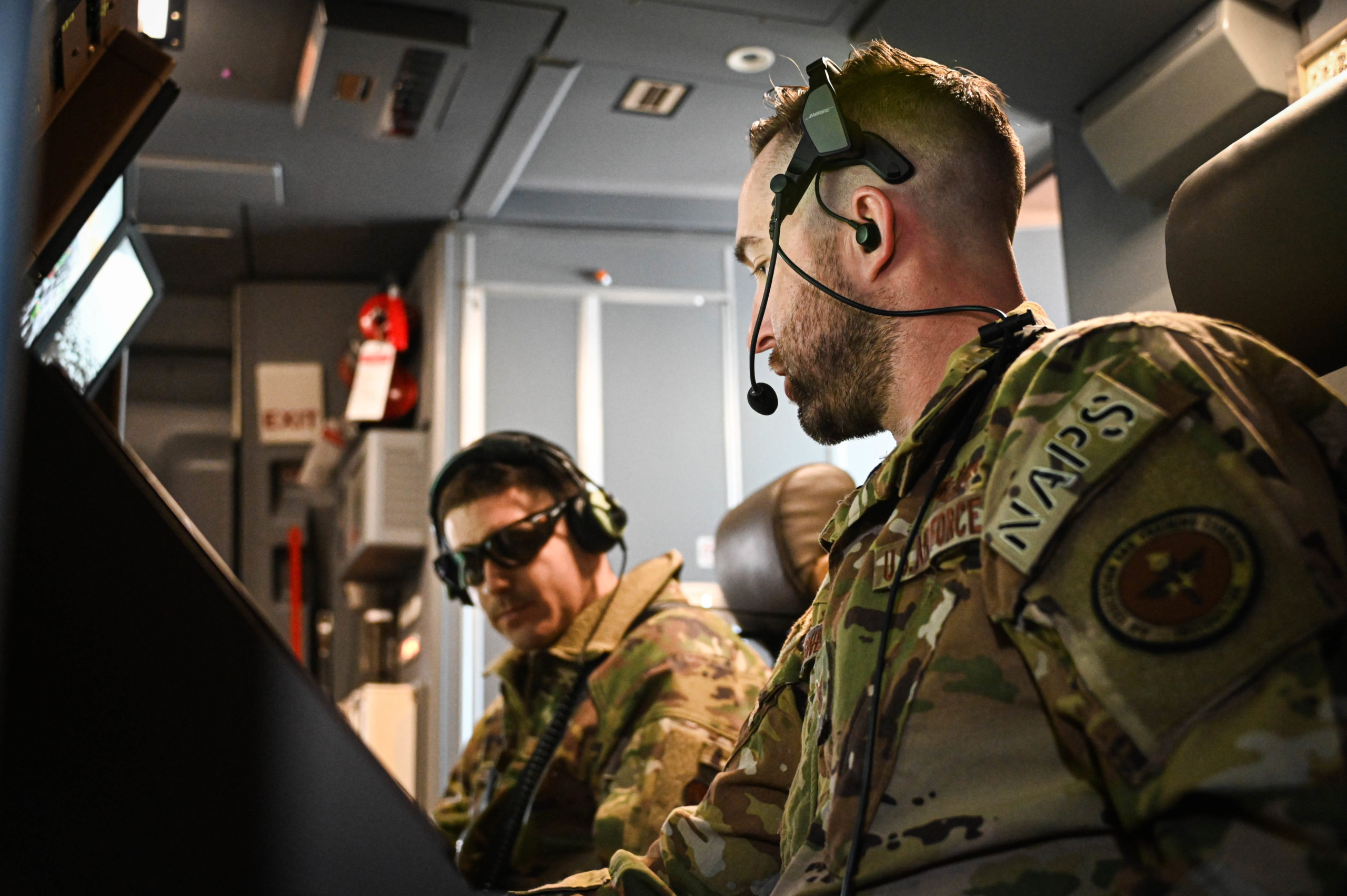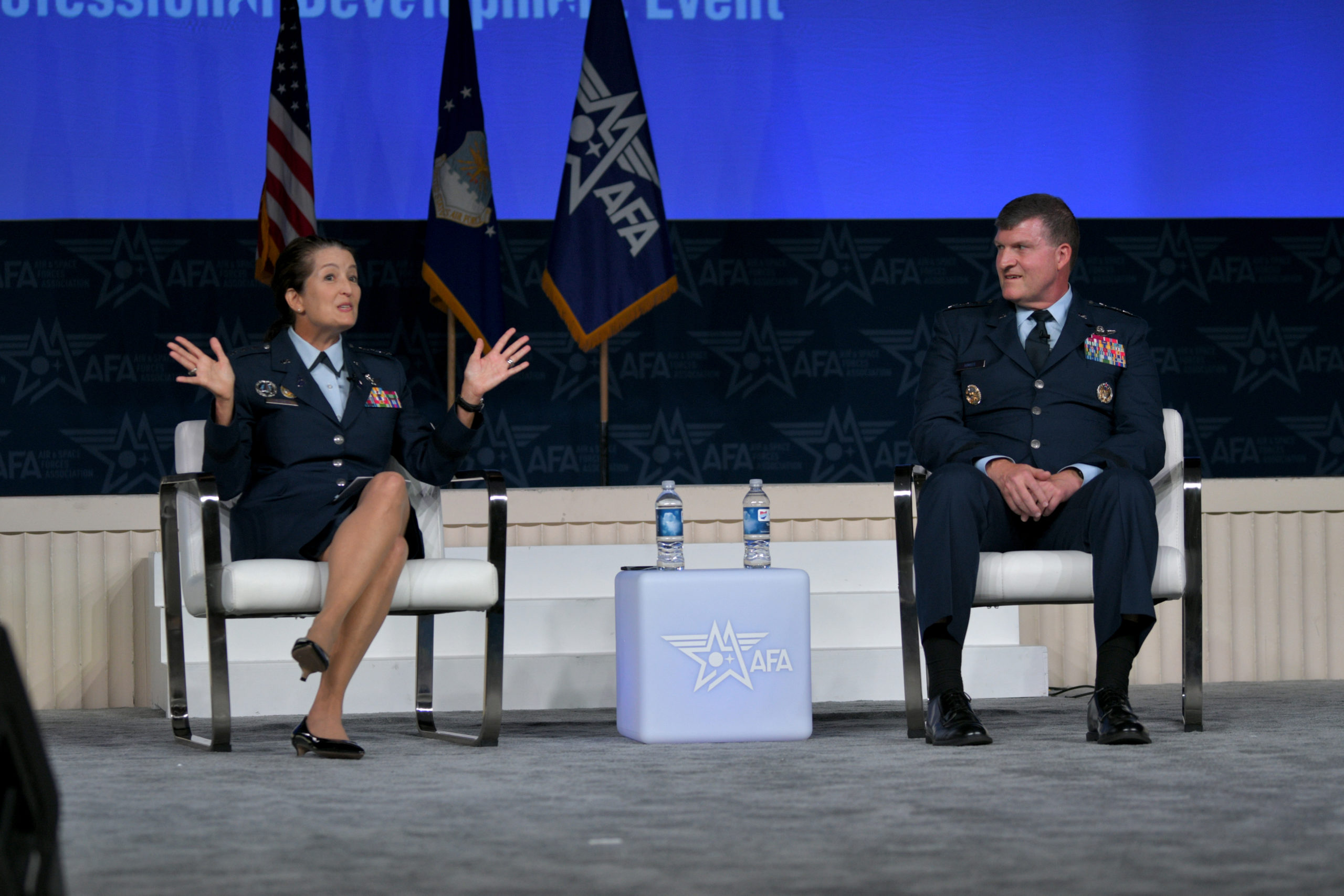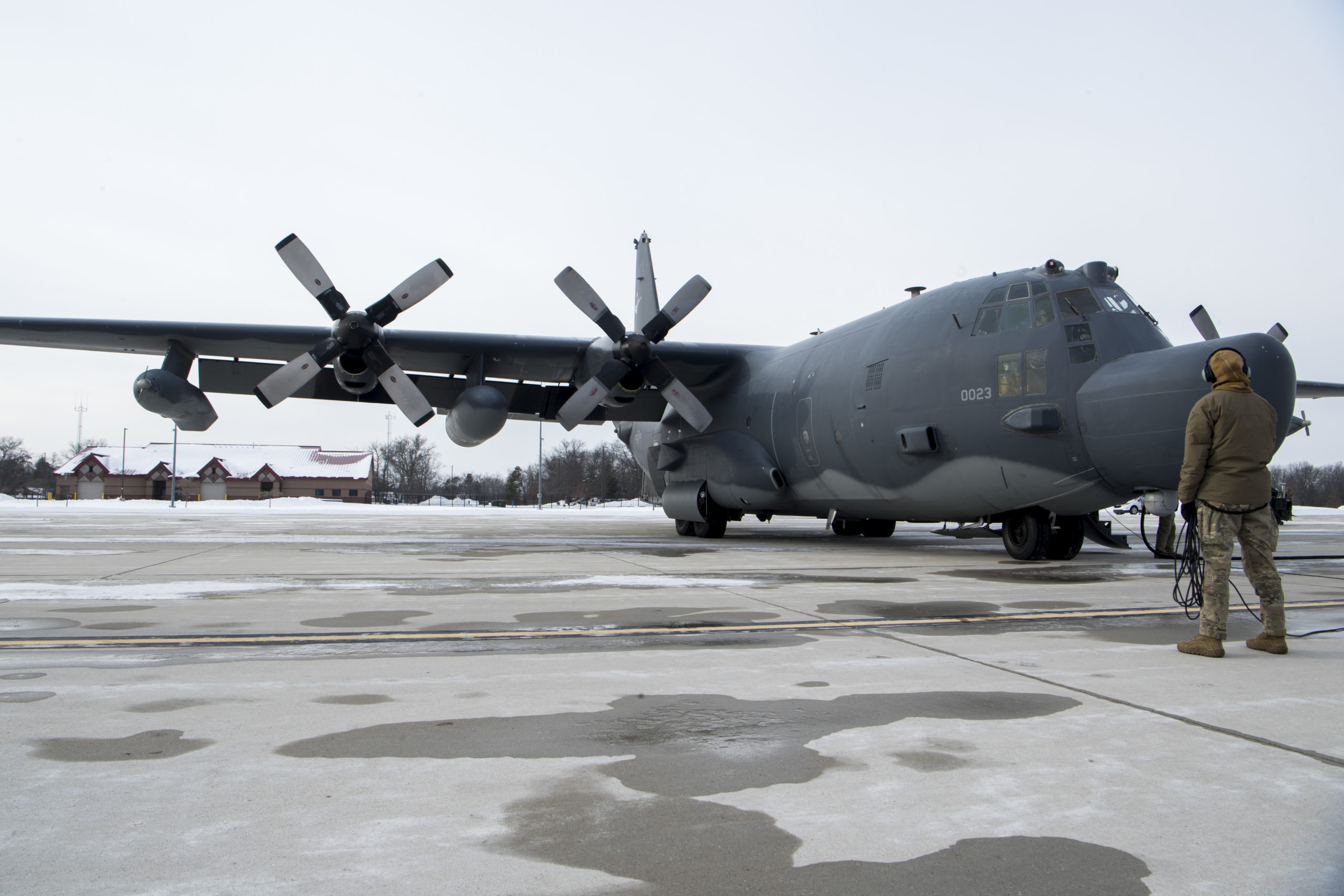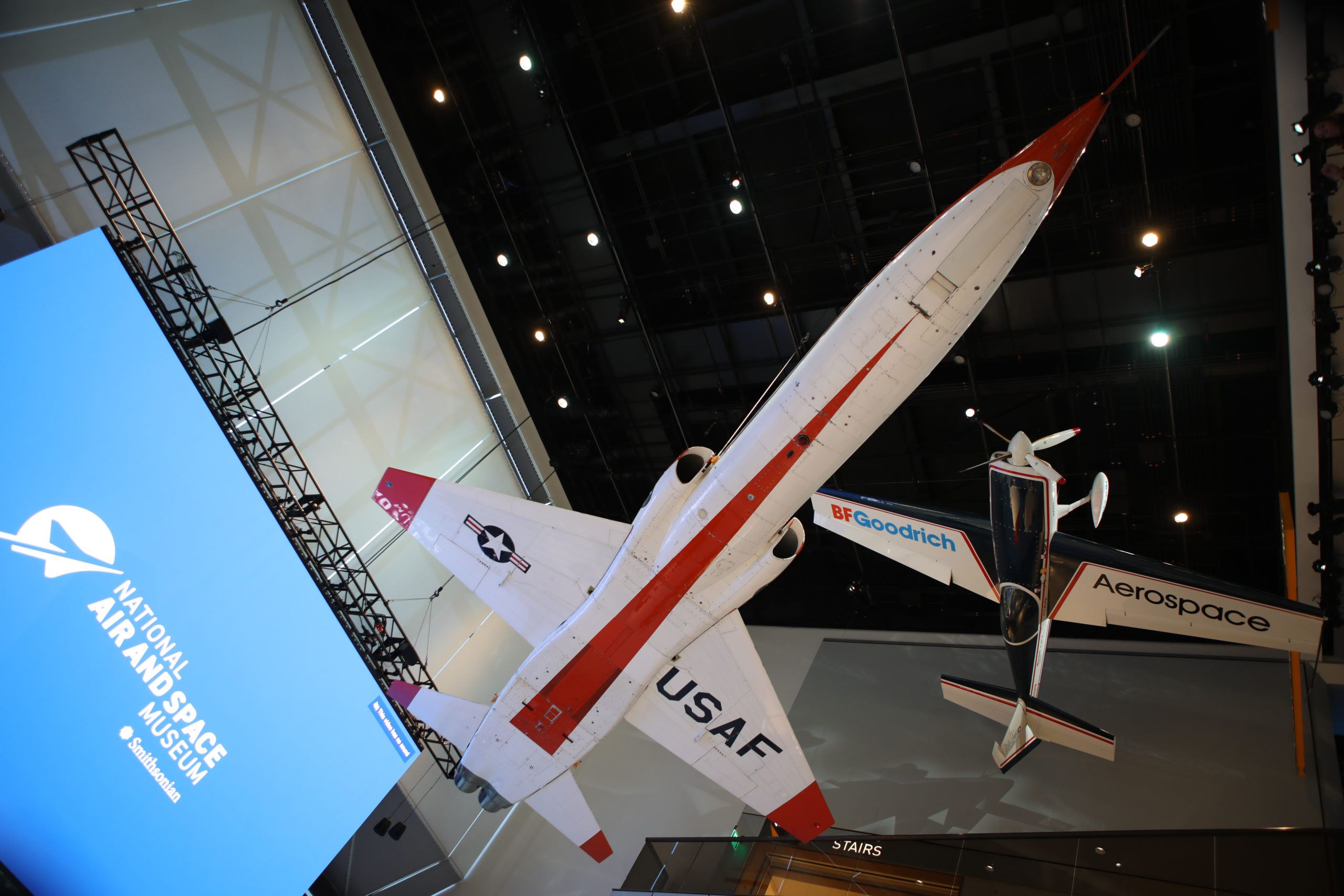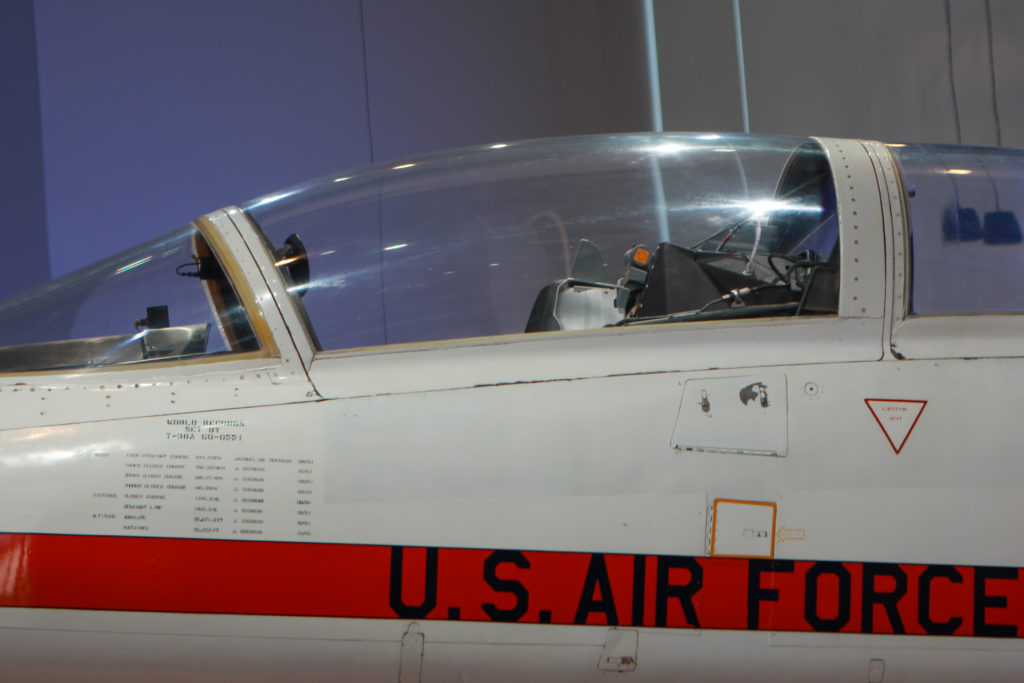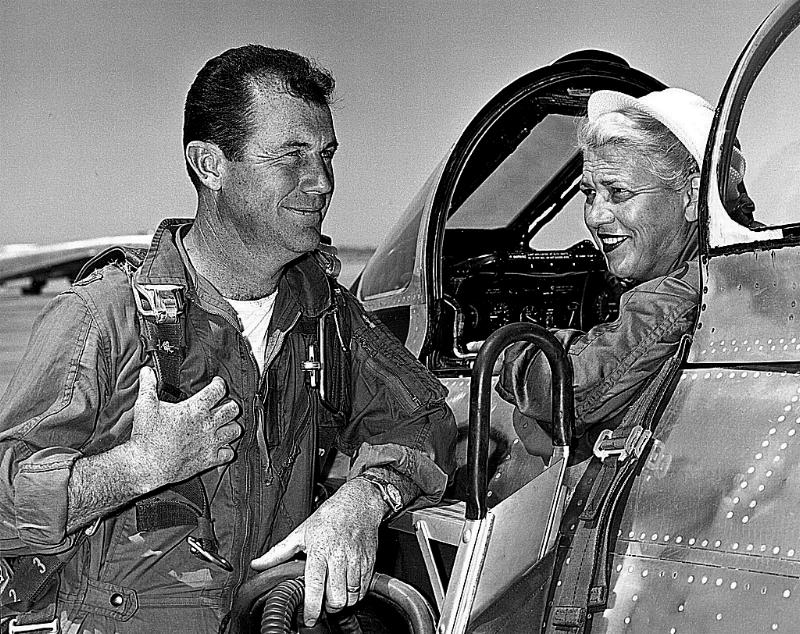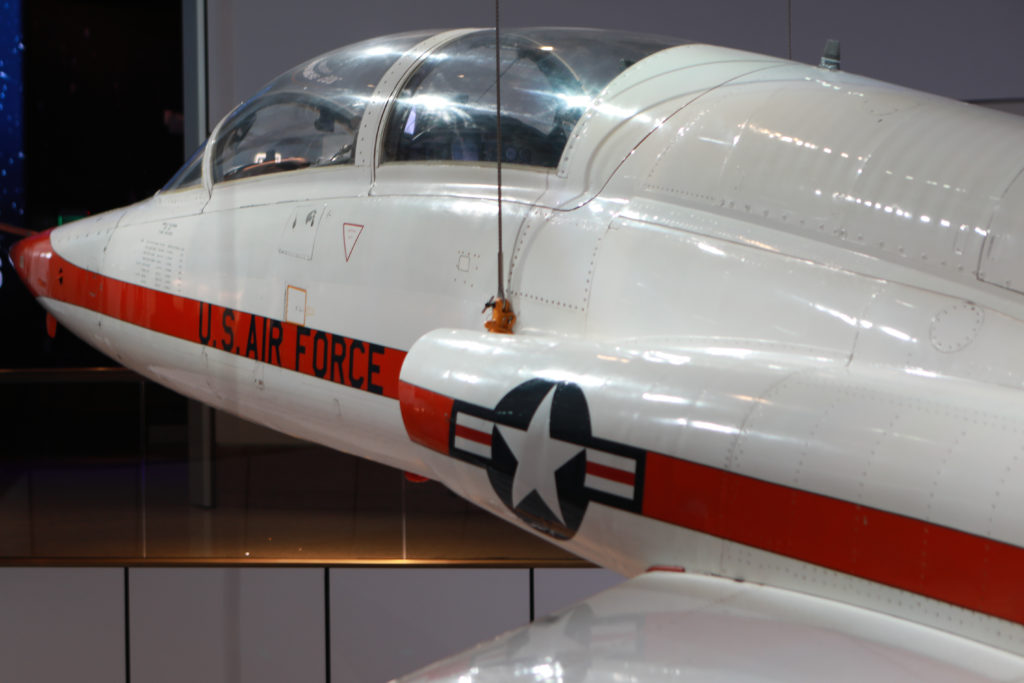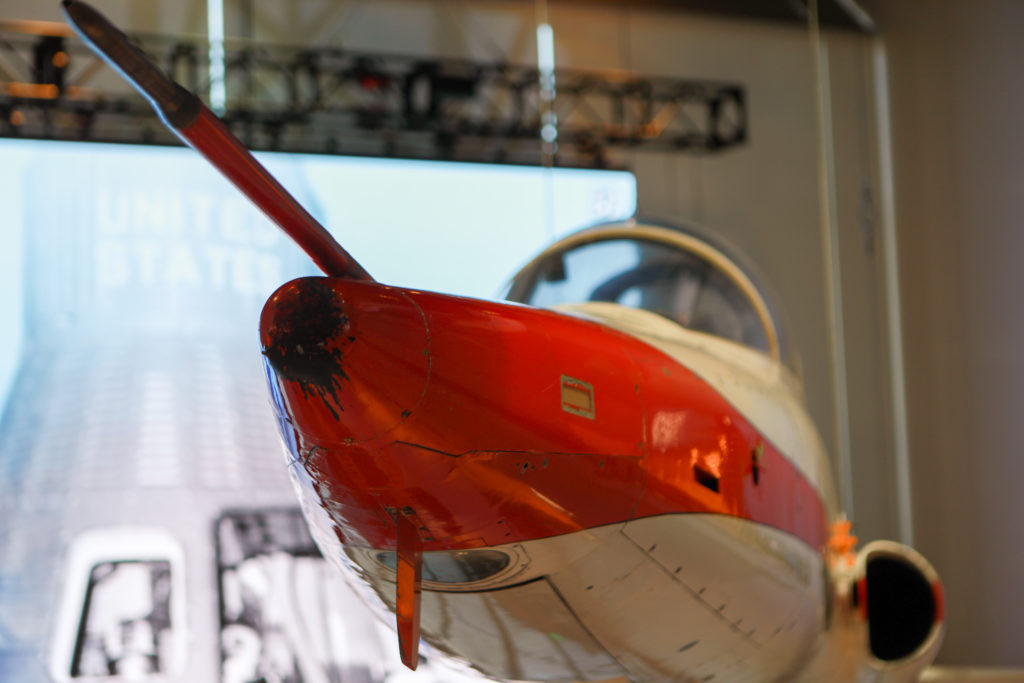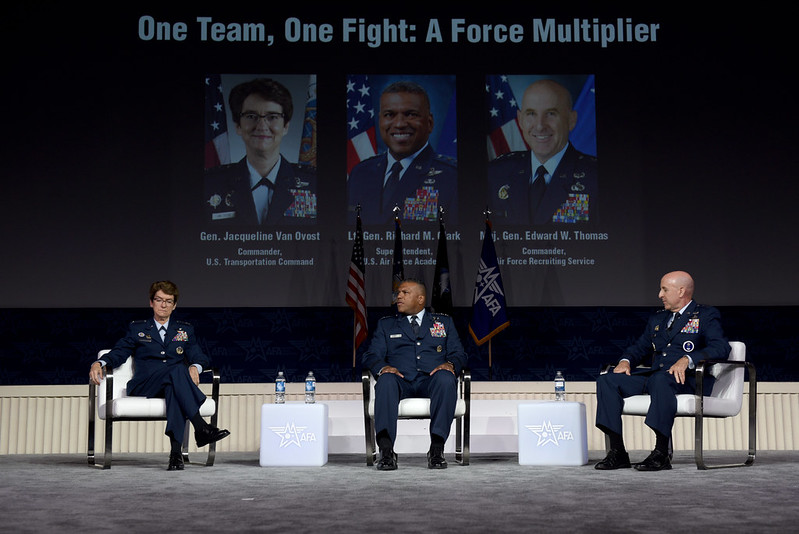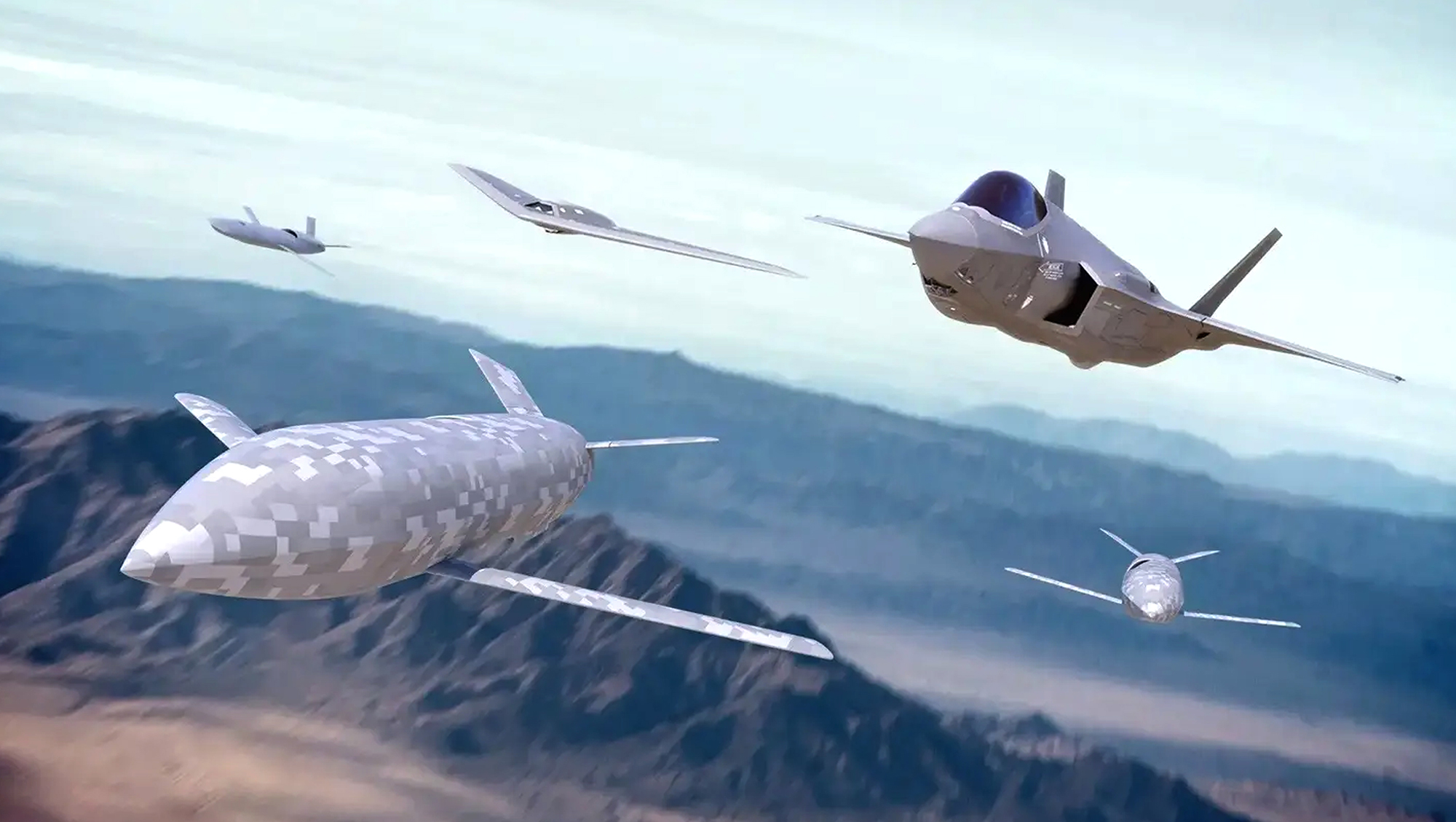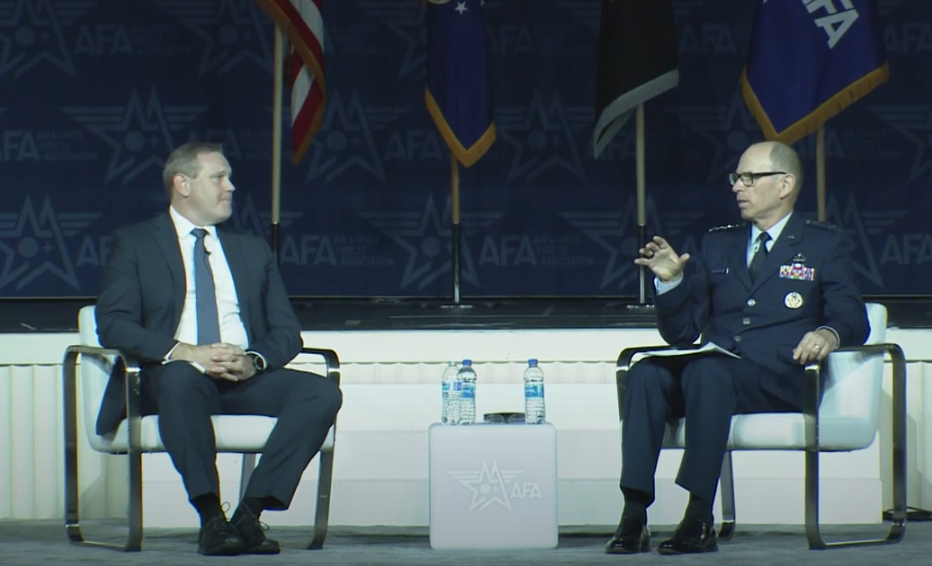Dave Harden, CEO of Outpost, led a discussion on “The Art of the Startup: Creating Something From Nothing” with Col. Nathan P. Diller of AFWERX, Lt. Col. Walter McMillan of SpaceWERX, Trevor Smith of Atomic-6, and Diem Salmon of Anduril, Sept. 19, 2022, at AFA’s Air, Space & Cyber Conference. Watch the video or read the transcript below. This transcript is made possible through the sponsorship of JobsOhio.
If your firewall blocks YouTube, try this link instead.
Dave Harden:
Good morning, National Harbor. How you guys doing today?
Audience:
Woo.
Dave Harden:
Good? All right. Woo. Get ruckus a little bit. It was hard to get into some of those earlier sessions, wasn’t it? It was packed out. It’s great to see you. So many familiar faces. It’s an honor to be here. I’m Dave Harden, managing partner and founder for Outpost and Outpost Ventures. Shout out to the Outpost Ventures crew here in the audience today. So great to see you guys. Great to have the team out here. So many familiar faces out there. Some of you, we might have crossed paths. Previously, a co-founder for AFWERX. We might have crossed paths as a host for Spark Tank. If you guys are familiar with Spark Tank, an amazing show of innovation from our Airmen. I’m always moved every year to see it. It was an honor to be able to help start it. To have people like Mark Cuban, George Steinbrenner’s, previous judges.
More importantly had a Airman come up to me last year literally with a tear in his eye and he said, “Spark Tank changed my life. For the first time I was able to take an idea and it was heard by the Air Force. I was able to transform it into something.” The very first year we had Spark Tank, the winner went on to implement it within 18 months across 440 aircraft. Unheard of. And so it’s great to see that culture change. It’s great to see it being continued today and so excited to be here with you all.
We might have crossed paths in other ways. I see a few great clients out there, Docker and Duralock, couple other folks. I see some portfolio companies we invested in like Hyper Giant AI and it’s been an honor to be part of this innovation ecosystem out there trying to make a difference, to do good, to change the landscape that we have today. And startups can really get into the exhilaration of getting into the DOD. It’s super exciting. You get some of your first contracts. Things are really rolling, but then there’s a heartbreak, a heartbreak of failure. And it’s been a rough year for me personally because some people say I look like Alec Baldwin. And I got to admit, Alec hasn’t been doing me any favors this year. Body double bookings have gone down significantly and the guy’s just got to stop shooting people. So, that’s my shout out to Alec to kind of bring it down a notch. He’s really hurting my street cred.
But on a serious note, we wind up with the Pentagon really interested in this innovation thing, right? In fact, last year 1,635 companies received over $1.5 billion of US input. And despite the Pentagon’s new enthusiasm for innovation, startups in the defense market continue to encounter longstanding obstacles. We effectively call it what the Valley of Death, right? Most companies face uncertainty when trying to bridge prototyping awards with more permanent follow on contracts. When you talk about today’s budget, you talk about fiscal year 25, that’s like a lifetime for a startup. And so as they try to push their product and get revenue, it can be frustrating.
And so while earning that first million dollars is so sweet, the success is so sweet. The most difficult part is earning that next $10 million. And that’s what we’re going to talk about today is the art of the startup. Because it’s not easy. And we have amazing talented people who have been in the trenches, who are out there doing it today on our panel. And I can’t wait to hear what they have to share with us today.
Maybe unlike other panels, we like involvement. We’re going to get to Q&A pretty quick, but we want to talk about some stuff first, if that’s okay with you all? And most importantly, I want you guys to be involved and maybe be a bit little bit loud. So every time I introduce a panelist, it’s got to get a little loud in here. It’s got to get a little ruckus, all right? So up first we’re going to start down at my far left. The one the only, let’s get our hands together. Colonel Nate Diller. Done an amazing job carrying the torch. More importantly, he leads strategy execution for over a billion dollars for our air force and our space force. And I think he’s got some big announcements too today, right? Couple big announcements later? All right, we got some big announcements later. Amazing, amazing.
We’ll stick with the Air Force theme here for a second. I want you guys to get your hands together for Lieutenant Colonel Walter the Rock MicMillian, let’s go. This guy’s a USC guy. If you guys are hailing or following any of your football stuff, an amazing individual. I’ve got to see him make a huge impact and he manages over $300 million of innovation input to our space force. An amazing human and amazing innovator.
We got folks from industry today. And so I want to introduce to my left, right here, put your hands together, the CEO of Atomic-6, Mr. Trevor Smith. This guy’s a passionate and focused entrepreneur. He’s breaking the mold on manufacturing and trying to make it happen for our nation. It’s great to see his work out there, it’s amazing. And he kind of jokes because he said I should be a PhD but I’m just a guy who turned my real estate finance degree into something good. So Trevor, thanks for being here with us today. Appreciate it.
Last but not least, the very talented, the amazing, put your hands together for Diem Salmon. We luckily have Diem here today. She’s the senior director for business development for Anduril. So many amazing things to talk about her. She is trying to change the way we do Autonomy. So she leads Autonomy at the Anduril force. And fun fact, she was the chairman of McCain’s campaign for over five years and his staff. So if you want to talk politics, meet her after for a little political chat.
We are super honored to have amazing people here and so we’re going to get into it. We kind of talked about, we had a lot of great conversations. We said, “Hey, we want to get some tips out there, we want to get some strategies, talk some stories.” And so that’s what we want to do today. What are the lessons learned from the hard knocks that these folks have experienced? And so, one of the things we talked about was it’s really hard to get customer feedback. It’s hard to get some feedback on how to get this thing to the next stage. And so I think that’s a great tee up for you, Trevor, to really kind of dive in. You’ve experienced this journey, right? Talk to us a little bit, get some tips and tricks out to the crowd on. “Hey, how do we deal with this market input, end user input? How do we gather that intel?”
Trevor Smith:
Yeah, absolutely. So thanks Dave. As Dave said, I’m Trevor Smith, president and CEO of Atomic-6. And the mold pun was great because we have a proprietary mold technology that answers the question that the composites industry has tried to solve for the past 50, 60 years, which is, “How do we get high performance at high volume for low cost?” That’s what we’ve addressed. So using the SIBR and STTR programs have a few tips for the small business folks out there and then the Air and Space Force folks who want to work with us. One is you can be the smartest inventor in the world, but unless you identify demand, you’re dead in the water.
So I want to thank the AFA for introducing me to Rock over here. About a year and a half ago I was working out of my house, didn’t have an office, didn’t have a customer. I flew out to LA. COVID wouldn’t let us meet in person. So we Zoomed called about a mile away from each other, but he spent an hour of his time. Rock MicMillan spending an hour his time with someone he didn’t know at all. But he took the time and saw the value in what we’re working with and pointed us in a couple directions. And so I brought a piece with me today that phase one turned into a phase two and we’re working with AFRL Space Vehicles ate to manufacture NextGen composite structures for things like the Rollout Solar Array on the International Space Station. So we’re making low cost radiation hardened redeployable structures which are going to be critical for all space emissions in the future.
Using that development has led us to working with companies like Red Wire and big deployable space systems. We’ve gotten a lot of attention. And it was like, “We want to track this. Let us know how your phase two works out?” And so Rock explained to me what a Phase I, II, III, TACFI, STRATFI, all the acronyms. It was great. So thank you for that.
The second is you should always, being the real estate guy, you want to leverage your assets and align incentives for a one plus one equals four situation. So we just submitted a phase two for hypersonic weapons research. And I do this with every proposal. I use that as a way to outreach for commercialization for private companies. Like, “Hey, if we’re going to do this proposal, what would be of interest to you? And if it is of interest, would you actually have interest in supporting the effort at a minimum with a letter of support or actually diving in with us and showing us some of the materials you’ve used in the past and best practices?” So we got Beyond Gravity, one of the largest space structure manufacturers in the world to support our hypersonic phase two submission. So it’s really great.
And then the last I want to talk about a case study. We’re in the middle of a Phase II, we’re making a bulkhead. So the initial proposal was to make a metal mold and a 3D printed mold. So we have a proprietary mold technology and AFRL wanted to see a cost analysis and performance comparison. So the initial piece was we did cost analysis on the metal and 3D printing tool. The 3D printing tool is way too expensive. So I talked to my technical point of contact and I said, “What do we do with the rest of this contract? It would be pointless to do this 3D printed tool.”
So again, going back to that commercialization and reaching out to industry, I reached out to one of the defense primes who’s been down selected to potentially make this unmanned airframe. And I said, “We’ve got an opportunity to present value to the Air Force to compare two different style bulkheads and two different technologies. Would you have interest in supporting this through materials and testing and all that stuff?”
So it’s a win across the board for the AFRL. So they get to see different technologies. It’s a win for us because we get to demonstrate our technology with two different bulkheads and geometries. And it helps us get that customer buy in and support from a massive defense prime, letting us skip over that Valley of Death that you talked about, which is critical for small businesses. So, we got that first million, we all partied, we’re accelerated and it’s so important to get that commercialization pull through so you don’t get stuck in that Valley of Death.
Dave Harden:
Awesome. Well congrats on all your successes to date.
Trevor Smith:
Thanks.
Dave Harden:
And no, I mean I think the message is loud and clear. That’s about persistence. I think that’s why I would take away from your thought and persistence and then matchmaking. And this was kind of a good transition over to Rock because you kind of got referenced in Trevor’s answer there.
Trevor Smith:
Thanks again buddy.
Dave Harden:
Yeah, so nice lead in. It was a good tee up. So Rock, you’re out there, you’re trying to make this matchmaking happen for hundreds of millions of dollars, a bunch of companies. And so what are you seeing in terms of what companies need to think about to scale. You get in the door, you start getting some traction, What does that matchmaking look like? What does that scale up look like? Let’s talk about that a little bit.
Lt. Col. Walter MicMillan:
Right, so first step for the company is really to understand your value proposition, understand what problem you’re getting after. A lot of times when a company come to me, they jump right into the check. I had one company they were getting after space nuclear power and they’re like, “Are you nuclear engineer?” I’m like, “No.” So normally first tip for a company is when you approach a potential customer first, understand what their mission is and what potential challenges they have. If you start there, then you understand how you can possibly solve their problem. And if you don’t start with a strong problem statement, a strong value proposition, then you don’t have the foundation that’s needed to truly scale and transition your capability into the military architecture.
And then for my fellow Airmen and guardians out there, this is a portfolio where you can go and explore for solutions to some of your toughest problems. So if we’re paying companies, like Trevor said, we gave him his first millie. If we’re paying companies phase two contracts on average 750K, that 750k, that’s coming out of my pocket, criminal dealer’s pocket for you to explore solutions to some of your toughest problems. And then guess what? If you sign an MOA, that’s not money coming out of your unit again, it’s coming out of our portfolio. So this is really all of your portfolio to be able to come and explore for solutions, help these companies understand what their value propositions are, get after what some of your toughest problems are, and then explore what that solution will look like for you and your unit.
And then if you sign a let over support, trust me, you’re not going to be the one that’s getting called by the three star, it’s going to be me, “Rock, what are you doing on this SIBR?” And that’s fine, I’ll take the heat for it. But I want you all to realize that this portfolio is empowered for you all to really explore for solutions to some of your toughest problems. So when you have a small business startup that approaches you with a SIBR Phase I, have that conversation with them. Later on today when you make your way down to the exhibit hall and you see a startup, small business with cool technology that you want to get after, it’s as easy as telling that small business, “Look for the next SBIR open topic and apply to that SBIR open topic and I’ll meet you on the other side.”
So it’s just that simple to get after some of your toughest challenges. And I’ve seen it plenty of times as referenced by Trevor so I don’t have to be the one taking all of the meetings with the startup small businesses. This portfolio is really for all of us to explore for solutions to our toughest problems.
Dave Harden:
Awesome Rock. Thank you. So try to maybe just summarize what you said and I think you threw out a gauntlet. I think you said everyone in this room can be an innovator. Everyone in this room’s challenged to be an innovator because there’s great programs. You run a great program. Colonel Diller has run great program. So if you have a problem but you don’t have budget, bring it through Spark, bring it through SpaceWERX, bring through AFWERX. Everyone here should not be frustrated in your day to day job. That’s what I got from your message. Thanks man, that was awesome.
So as we all know, I think Anduril’s probably like the poster child for the non Boeing Lockheed kind of story. So if you get any press clip, Anduril’s hit this ceiling, they want to get into the big contracts, they’re trying to scale up, trying to make it happen. And so we see that conversation a lot played out in the media. And so I think as businesses get going, they’re scaling up that maybe they get over that initial hump, get that Phase II, maybe get a few more million dollars. What do the big contracts look like? How do you get make a big capability impact for the Air Force and for the nation?
So can you maybe give some words, I think, since you’ve been through that experience Diem, can you really talk to maybe some tips for the crowd on how do you scale up? You’ve been through that roll up your sleeve sausage making, how do we make it happen? How do we scale up? How do we make it happen?
Diem Salmon:
Absolutely. And sum it up, it’s really, really hard and it takes years and years of work. So what happens when you’ve won your SIBR Phase II and you have around $750,000 and you have a good idea. And that’s when the actual work starts. Because at that point there’s really two key things. It’s one, you need to have a transition partner and you have to have a very dedicated transition partner that believes in you. Who not only knows the things that you’re working on, whether that’s in SIBR or at AFWERX, SpaceWERX or any other kind of the DIU innovation type efforts. But they need to believe in the technology that you’re building and that it’s actually going to help them as the end user.
And that transition partner actually very much needs to be willing to pull you through all of the knot holes that’s required to actually get to the point that scales. And this is a very long process. This is a two to three year process. One of the worst things that a startup can hear is, “I love it, I love your technology. I’m going to palm for it.” And then you’re waiting for two to three years, maybe the money will come and you have no idea where your company’s actually going to be at that point.So the only way this works though, the only way to transition is you just need to get ahead of it. And so you need to start that transition process the moment you start any kind of, as soon as you get a toll hold, basically.
And then the second piece is, especially for startups, when you get to the larger programs, the department is typically going to favor known mediocre performance over completely unknown. And so what do you do over those two years, those three years that you’re waiting for that RFP or for that program to start? It’s just you have to prove your capability. You should be going out there, you should be demonstrating constantly. You should be trying to get in field experience and proving that your technology actually works and in many ways getting ahead of your competitors. By that time that RFP drops, you should have been working with the transition partner already and they should have complete belief that the technology that you’re proposing actually works. Because you’re just not going to be given as much of a, well, you’re not going to be given any benefit of the doubt.
This is exactly what we did on Counter-UAS. We started with a very small DIU shoot-off. It was, show up the range, see if you can intercept small drones. We did very well. That’s when we started building relationships with SOCOM and matured that over the next two years. We did combat validations, we worked very closely with them on understanding what their actual needs were, how to actually build out the capabilities that they would need in the field. And after all of that work, two years later, that’s when we actually got the SOCOM SIP award, which was about $1 billion.
Dave Harden:
Awesome. Great insights. Make sure you come up and get more answers because Diem is someone who’s been through the ringer and understands the business. And so super, super helpful. Thank you. And the beautiful thing is AFWERX has tried to put together some transition programs. Many of you’ve heard of the strategic matching program within AF Ventures, so it’s kind of a TACFI, STRATFI Trevor alluded to that earlier. How do you transition? And there’s been some big wins but there’s been some hold back too. And I think sometimes a lot of the clients we talk to, the companies that we’re trying to help in this dual use tech space, they wind up trying to figure out, “How do I balance this commercial market?” My investors are kind of like, “Hey, I got to get my ROI. You got to get some return, we got to get some revenue. We got to get the projects going, I need some momentum.”
And at the same time the defenses might be like, “Hey, I really like your stuff. Let’s talk in two years when I can get you some scratch.” So it’s this weird dynamic that happens. Super frustrating sometimes for companies and businesses. So Nate, this question is really for you. You’ve had an amazing experience. You’ve been building out this great and continuing the journey AFWERX. So super proud what we see and the impact that you’ve made. Tell us how you can get some tips and tricks out there for folks to think about, “How do I balance this commercial thing but also align these needs that I have that are coming from real war fighter needs in the Air Force?”
Col. Nathan P. Diller:
Yeah, absolutely. Dave, first, huge thanks to you, the founders of AFWERX for creating this tool. Guys like you, guys like Glass Gordon in the trenches at the beginning, the frozen middle layer that was not frozen, the notch or two above that really allowed us to launch. And most importantly, huge thanks to our Airmen and our guardians who’ve been out there and created new concepts to bring in these new technologies. Because as was discussed earlier this morning, it’s not just the technologies. And so what are a couple of tips? Well one, I think if we have been successful in AFWERX, it’s because we have created these teams, right? Teams of teams across a multitude of different stakeholders, in particular as you’re seeing that merger.
So tip one is if you’re a company that’s out there, great, really go look for that feedback from those Airmen and those guardians out there. Because what we’ve found is that while we certainly bring money forward, maybe the most useful thing in many instances is the great ideas of our Airmen and guardians who not only unlock a military use case that may be unconsidered, but in many instances start to unlock some of those commercial use cases. So listening to them, fighting for those opportunities to engage with what truly is the core of our innovation engine in the department of the Air Force with those Airmen guardians.
The second tip I would recommend is provide feedback. As you look at AFWERX, if you look at the evolution, Dave, since you were here, we do not see ourselves as a static institution. And so we saw kind of the AFWERX 1.0 that opened up culture in a different way that we are looking at problem, a level of humility that there are great ideas out there if we change our structures a little bit. AFWERX’s 2.0 was then really, “How do we go and implement these tools, $1 billion of funds and get it out to the right people at the right time at the right scale with a level of rigor that’s expected for using taxpayer dollars?”
As we start to evolve then, into this AFWERX 3.0, we’re looking to wait feedback that we’ve had. We’ve talk clearly about the Valley of Death. We talk about what are those other emergent technologies that are out there that we could really launch? And so a couple of specific examples where that feedback loop closely between the innovators inside and outside the Air Force, a couple of new initiatives that we’re launching. The first is Autonomy. Obviously we’ve seen some great effects that in Autonomy, again, both inside and outside the Air Force, we cannot afford to lose commercially this race for autonomy or militarily. And so today we’re launching our Autonomy Prime Effort in the same spirit of our Agility Prime, our Orbital Prime Efforts that really create now this conversation and a way to be more deliberate about bridging the Valley of Death.
The second initiative is this AFWERX Nexus approach. Again, in an AFWERX 2.0, what we’ve seen is some amazing tools. We’ve talked about STRATFI, talked about the open topic, talked about obviously some of the specific approaches, the Prime programs that have been out there, the AFWERX challenge. What we’re now able to do is bring those together in a coherent way. A couple years ago, the Air Force corporate process, right, again, if I’m not sounding very innovative, I forgot my flip flops and t-shirt today. This whole effort was seen as innovation theater.
Today it’s seen very much as a core part of our Air Force corporate process to bring in talent that exists outside of our traditional channels and to bring in actually capital. That we believe there’s a path where if effectively executed, we can increase the effective toe-up for the department of the Air Force by multiple percentage points, leveraging the amazing capital out there, and building this larger team across industry, across our Airmen that really gets to a whole nation approach to attack the problems that we’ve had. So huge thanks to you Dave, and really excited to continue that feedback loop to try to institutionalize, that’s a naughty word in an innovation board, but to get rid of some of those pain points that we’ve seen as we start to move forward in this innovation process.
Dave Harden:
Awesome. Thank you Nate, you got a couple big announcements too. You want to hit them?
Col. Nathan P. Diller:
Number one, Autonomy Prime. Go out to our webpage today, AFWERX.com. And this other one is this AFWERX Nexus program where that bridge across the Valley of Death, those events that AFWERX challenging program did amazing things in terms of really bringing together and curating the problem, bringing folks together. What it was potentially missing that led to multiple calls from across the river and from CEOs is, “What’s that follow through? How do I take this from cool innovation theater to, hey, here’s real contract.” And scaling that relationship that we’re going to continue to put out 1000s of contracts at the 1000 a year of Phase I contracts. We’re going to go make 300 companies, $1 million companies in a year through the phase two and we’re going to go pick the handful of those that are those STRATFIs.
But most importantly, the beginning of that process, as you heard General Brown say today, making a decision that, “Hey, we are going to invest in autonomy. We’re going to invest in these next generation technologies where there is,” we’re not going to go build the next Stealth aircraft most likely in AFWERX, right? But when we look at those technologies that are out there that have this dual use capability, this becomes now the form to bring those in and move across that Valley of Death in ways we haven’t before.
Dave Harden:
Super helpful. Awesome. Well we like to keep this stuff interactive. We got to hear from amazing panelists, but we want to hear from you all too. So I can ask some more questions of the panel, but it’d be great to hear what’s on your mind if we don’t have someone going around with a mic, shout it out. I’ll bring the mic to you. We’ll figure it out. But let’s have a convo. So we got a mic over there. Someone’s got to have some question on their mind. Well, we’re going this way. Let’s go. Keeping it moving.
Lt. Col. Sarah Forton:
Sir, Lieutenant Colonel Sarah Forton, tech commander of the OSS at Fort Bragg. Listening to this all pan out in the Air Force WERX. I’m actually new to this. I’m here because of my Spark sale. Draco Spark sale team has invited me to see what they’re doing and it’s fantastic. And I hear about all these awards of contracts and several million dollars. So my question is essentially awarding startup contracts, what are the safety nets in place to hold these contractors accountable along the way?
Dave Harden:
Okay, awesome. We’ll get to the heart of it. Hey, we put this contract out there. Some of it’s to see if we can work things out, but we want to make sure that certain things are being held to a standard. Panel?
Col. Nathan P. Diller:
So the big thing is we’re not going to go drop a $30 million contract. These are companies in many instances have never worked with the federal government before. In fact, we’ve been told by some CEOs they had to hide from their board of directors because of the horrors they had heard of SIBRs before. And so part of it starts with those initial $50,000 contracts. Are they delivering something? And then we’re scaling that relationship and we are really counting on those technical points of contact to make sure that there’s rigor in those deliverables. The other piece that we’re going to do that comes in this AFWERX 3.0 model is under Spark, we’ve seen a lot of the bottoms up innovation. As we start to take some of these top down innovation efforts that come through our primes really being deliberate about curating the DOTMLPF-P so that when it goes back out to the wings, there’s this iterative process to keep the contractor.
We’re not expecting someone who’s never worked in government before to immediately hack the system. And so through this grown relationship, we have a path with Spark that now actually Spark is curating that problem. We’re not imposing an innovation tax on the wings, but rather we are creating that relationship early to build out, “What is the doctrine, how are we going to use this, what is the policy that can be used?” And as we’re checking each of those pieces, the training pieces, can that contractor actually deliver over this kind of two year cycle? That ideally within a year we can take a company. And we’ve done this in many instances of $50,000 to $50 million in a year. So it is a piece of learning that keeps us relevant in industry and it keeps us relevant strategically against the adversary that we’re there to meet.
Dave Harden:
And I think the more we can add processes to bolster that up, we can look at other things like foreign influencer companies, et cetera, cetera. So I think there’s some well-documented stuff and when you go fast, things fall through the cracks. But my sense is that we can continue to shore that up as an air force here moving forward. I saw lots of other hands going up. Let’s try to get as many questions as we can. You get to run with the mic now instead of me, so that’s good.
Jade Baransk:
Thank you so much to the panel. My name is Jade Baranksi, I’m the CEO of Vision, one of those SIBR companies. Very happy to be here. And I have a question, I don’t exactly know who it’s best for. So I’m just curious about your thoughts on transitioning from the Air Force, which we’ve already done, right? We’re in a couple other branches. But any tips or tricks on how to have that conversation? Specifically what you spoke to ma’am about those transition partners? Because as soon as you go talk to the Navy, they’re like, “We do things differently.” Which is great, but now we’ve never worked with them. So just really curious about any thoughts on that.
Lt. Col. Walter MicMillan:
So if you have a product that’s great for not just the Air Force but the Navy as well and it’s at a point where it can scale. Normally what I tell companies is our STRATFI program and our TACFI program, we don’t discriminate by the dollars that’s coming through that pipeline. So if it’s Air Force dollars, if it’s Navy dollars, that’s a good program for multiple services to converge upon scaling a product and understanding what a scale product for the department looks like. So, that’s one piece.
So yeah, if you’re at that point where you’re at the end of a SBIR Phase II, the Navy’s interested. I have a couple of Space Force companies like that right now where they’re at a STRATFI, the IC community is interested. The IC community is contributing funding to that STRATFI so it’s not a total Air Force bill. So, that’s one convergence point that you can look into.
Diem Salmon:
Yeah, I would just add that, yes, they’re very different. The Navy’s different. The Army’s even more different. And sometimes you feel like you’re just going to build the same thing three times over. But especially in some of the more innovative technology areas, I’ll use Autonomy as an example. It’s actually a pretty small community and they all talk to each other. So if you can find a way to break into that group and you can have those conversations with all of those folks, they’re sharing ideas, they’re paying attention to what they’re each other are doing and they’re using that to compare notes. And so it’s never going to be one for one. It’s going to be a little bit unique, but for the most part I think, especially if you can get into one service, it will really help you move into others just because there’s a little bit more of that validation occurring.
Dave Harden:
Great inputs, appreciate it. Even greater questions and love it coming from the audience. Who’s up next? We’ll go up front.
Robie Samanta Roy:
All right, thank you Dave. Good morning, Robie Samanta Roy with a company Electra.aero, that is funded by Agility Prime. Question I have for the panel is one of the big elephants in the room right now. And Diem, I’m giving you a past experience. SBIR reauthorization, this is a big elephant in the room that’s going to hold up funding for the next cycle. Any thoughts and comments on where we stand and the way going forward?
Col. Nathan P. Diller:
So I’ve had the great opportunity to brief staffers on a regular basis for several months now. I think there is progress being made. Certainly, I think it’s been some appreciation for things that we’ve really pushed in particular in AFWERX, things like due diligence, things like building out a team of operators, acquirers, and that war fighter right at the beginning that helps accelerate the transition across the Valley of Death.
Obviously for others to decide. I think there’s also been a little bit follow up to the previous question Naval X recently, they’re looking at taking the SIBR budget and putting that under Naval X. So you’re seeing kind of a multiplication across the services and a collaboration across agencies to create a little more common model that’s create data sharing. And so I think that’s given some confidence in areas where maybe there was some concern about reauthorization. But you probably know better than I do, Trevor.
Trevor Smith:
And I’ll speak to that from a very small business, it’s the lifeblood for especially a material science manufacturing company to get off the ground, we have a lot of expensive assets to put into place. So this is critical for us to get that commercialization interest and that flywheel has to start somewhere. And the SIBR and STTR programs have allowed us to do that. But I’ve told our team, we’re not going to keep doing Phase IIs and Phase Is. We need to drive in and get into commercialization and ultimately not rely on that program at all because it’s baby formula. And if you want to grow your company, you have to start eating meat and potatoes.
So the program is designed to help companies grow out of that and get over the Valley of Death. I use the baby formula because I’m going to have a kid in about a day. But from my viewpoint, that’s how it should be viewed. We’re all in the same team here. We shouldn’t be taking advantage of the program from a small business perspective. And you should really drill into what’s getting traction within the Air and Space Force or whatever branch it is.
Dave Harden:
Awesome, thanks. The art of the startup is really about businesses and the DOD kind of coming together. And everyone in here, each of you has a chance to be an innovation superhero. If you have a problem in your workplace, a challenge. If you’re an Airman or Guardian, bring it up, fight for it, search for solution, connect with other people. If you’re a small business and you’re agile, you’re innovative, fight to bring your good works, your good team to our nation because we need it. We need it at this time in history more than any time in history. And I know for myself, I do not want my grandchildren speaking Chinese, not by choice, Russian not by choice. And so my plea for us is to band together to continue to solve problems and to kind of find the innovation superhero within each of us. That’s my challenge to you.
It’s been a great honor today to be part of this panel, to be able to moderate it, but more importantly, to have far more smarter people than myself. So if we could put our hands together, Trevor, Rock, Diem, Nate, thank you so much. Thank you to the great staff supporting this. AFA and all of you that came out today have a great rest of the conference. It was an honor to be with you today. See you.

